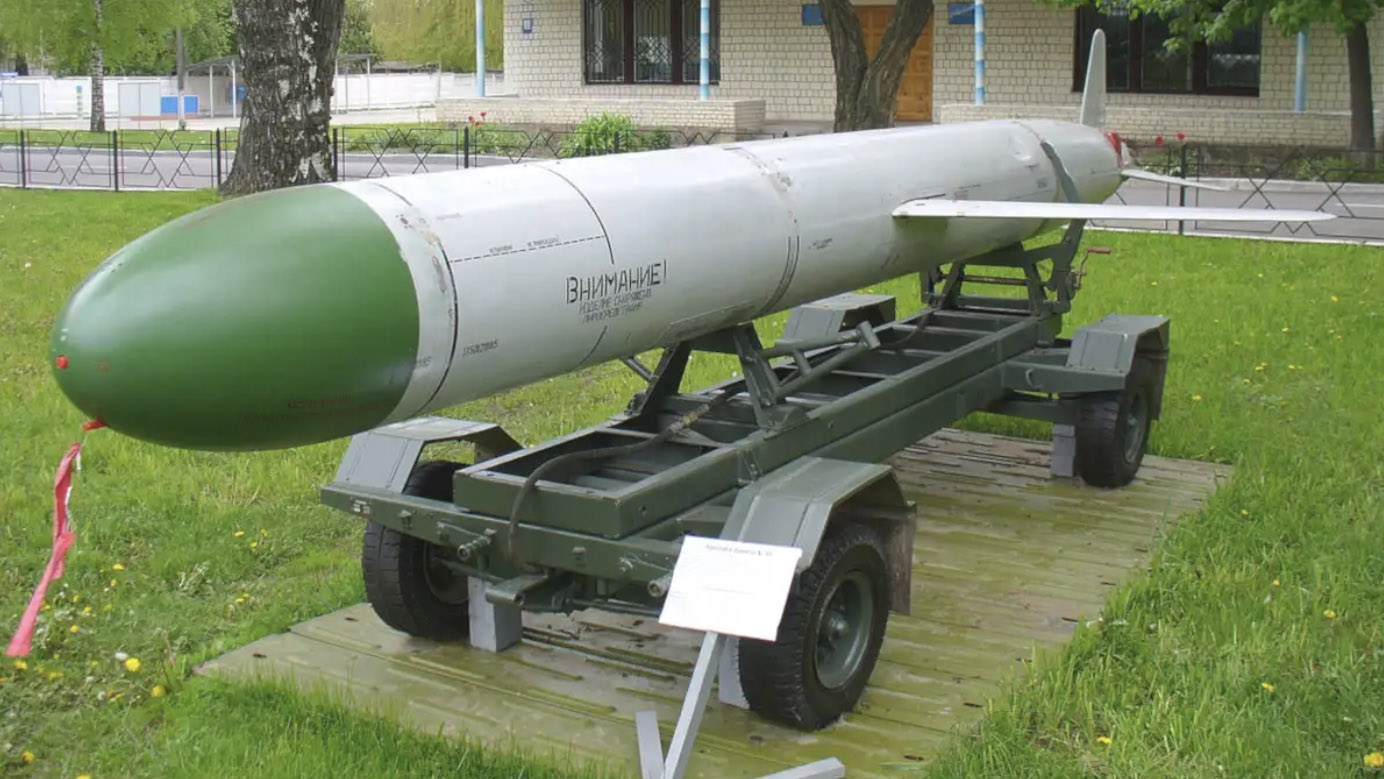Iran has unveiled two new missiles — a surface-to-surface ballistic missile and a naval cruise missile — that could offer the country significant new capabilities. The missiles are notably named after Iranian General Qasem Soleimani, who had been commander of the country’s Quds Force, and Iraqi militia leader Abu Mahdi al-Muhandis, both of whom were killed in a U.S. drone strike in Baghdad, Iraq on January 3, 2020.
Details of the weapons were revealed by Iranian state TV on August 20, 2020, which is also the country’s National Defense Industry Day.
Iran’s semi-official Fars news agency said the Martyr Hajj Qasem is a surface-to-surface ballistic missile with a range of 870 miles. An Iranian state TV report claimed that the missile had been tested against an undisclosed air defense system, successfully evading interception, and it’s also said to be accurate enough to fall within 16 feet of its designated target.
The new ballistic missile has a solid-fuel rocket motor, a design that is typically faster to deploy, as well as safer for longer-term storage and transport compared to liquid-fueled designs. Its appearance suggests it is a two-stage weapon, perhaps the result of mounting an existing shorter-range missile, in modified form, atop a new solid-fuel main stage. The upper stage appears as though it could be derived from one of Iran’s existing short-range ballistic missile designs, some of which already offer a degree of precision capability, as we’ve discussed before here.
With regards to the Martyr Abu Mahdi naval land-attack cruise missile, Iranian state TV claims it can attack targets at a range of 621 miles. Photos apparently depicting the Martyr Abu Mahdi missile show it being launched from a truck-mounted container, suggesting its test campaign is being undertaken on land or that it could also have a coastal defense role against enemy ships.
It has been suggested the new Martyr Abu Mahdi is a variant of the land-based Hoveyzeh cruise missile, which was first unveiled in February 2019. Hoveyzeh itself appeared visually similar to the ground-launched Soumar, which Iran first presented in public in 2015.

Both Soumar and Hoveyzeh bear a strong resemblance to the Soviet-designed Kh-55 air-launched cruise missile, examples of which were acquired by Iran from Ukraine in 2001. In the past, Iran has claimed that the Hoveyzeh has a range of nearly 840 miles, considerably more than the new Martyr Abu Mahdi missile and the reason for this discrepancy is unclear. You can read more about the complex history behind these earlier cruise missiles — and the subsequent appearance of similar weapons in the hands of Houthi rebels in Yemen — in this previous War Zone article.

Providing the range figures released by Iranian media are accurate, both the ballistic missile and cruise missile would have the ability to hit U.S. bases across the Middle East, as well as Israel and other regional opponents, such as Saudi Arabia and the United Arab Emirates. Should they enter full-scale service, they would provide a potentially more flexible option than Iran’s longer-range ballistic missiles.
In particular, the Martyr Hajj Qasem ballistic missile has been highlighted for demonstrating the considerable progress made by Iran in this field of weaponry. Fabian Hinz, a Research Associate at the James Martin Center for Nonproliferation Studies in California, provided a photographic comparison of the new missile alongside the original Shahab 3. Hinz described the Shahab 3 as a “horribly inaccurate copy of the North Korean liquid-fuel Nodong, itself basically a scaled-up version of the Soviet Scud,” while the new weapon boasts an indigenous solid-fuel motor and precision guidance.
Solid-fuel rocket propulsion seems to be an area in which Iran is particularly proud of its recent developments. Earlier this year, for instance, the country’s Islamic Revolutionary Guard Corps (IRGC) was keen to highlight the advances it’s made in solid-fuel technology, including its applications for space launch systems. It’s certainly a possibility that the Martyr Hajj Qasem ballistic missile shares some of this new technology.
The appearance of the new MRBM also comes soon after Iran released footage of a test of what was purported to be a newer version of its medium-range Khorramshahr surface-to-surface ballistic missile. Originally unveiled by the IRGC in September 2017, the liquid-fueled Khorramshahr has much in common with the North Korean BM-25 Musudan (also known as the Hwasong-10) design.
According to the IRGC, it has a range of around 1,250 miles and can carry multiple warheads, although the latter feature hasn’t yet been independently verified. The latest video, released by the Fars news agency on August 16, 2020, apparently shows the Khorramshahr being tested with a small re-entry vehicle (RV), which could serve to extend its range and potentially enhance its accuracy. The War Zone covered the Khorramshahr in detail in this previous article.
Prior to the Khorramshahr, Iran also introduced another type of solid-fuel ballistic missile, the Sejjil, apparently with a similar range to the Khorramshahr, and with a two-stage motor.


The significance of these two new weapons — and the Martyr Hajj Qasem in particular — should not be understated. After all, Tehran has already employed ballistic missiles against American objectives in the region. Iran has also demonstrated its willingness to use short-range ballistic missiles against the forces of the Islamic State in Syria in the past. Tehran also undertook unprecedented missile and drone attacks against oil installations in Saudi Arabia last year, which The War Zone covered in depth here.
On January 8, 2020, a barrage of Iranian ballistic missiles struck the airbases at al-Asad and Erbil in Iraq, injuring more than 100 U.S. troops, but not killing any. That missile attack was launched in response to the killing of Soleimani and al-Muhandis.
It’s grimly ironic, therefore, that the names of these military commanders now find themselves attached to this new generation of Iranian weapons.
Contact the author: thomas@thedrive.com
